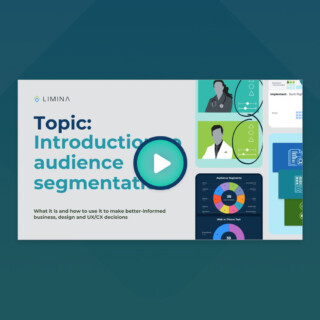Unlocking the power of user-centered audience segmentation
by Ellie Krysl

In today’s digital landscape, understanding your audience isn’t merely a good practice; it’s the cornerstone for delivering exceptional user experiences and achieving business goals. Organizations that prioritize user experience and user research consistently outperform their counterparts.
The numbers don’t lie:
- Brands with superior customer experience bring in 5.7 times more revenue than competitors that lag in user experience. – Forbes
- According to a Forrester study, companies leading in customer experience outperform their lagging peers by nearly 80%.
- 80% of customers state that the experience a company provides is as important as its products or services – Salesforce
In the wake of COVID-19, user expectations have soared even higher. As Forbes aptly puts it, “Taking a customer-first approach has become almost mandatory for sustaining and building a successful brand.”
In essence, user experience has never mattered more, and the secret weapon for organizations seeking growth and success, especially in uncertain economic times, starts with user research and audience segmentation.
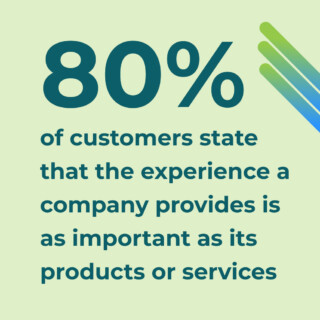
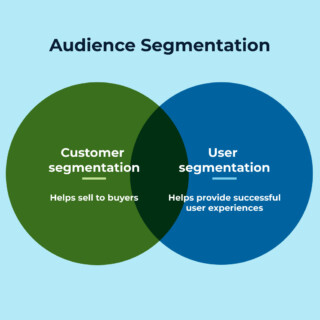
Audience segmentation for user experience
At its core, segmentation for user experience is about dividing your user base into distinct groups based on shared attributes, behaviors, and needs so organizations can better understand and serve them. Unlike traditional marketing segmentation, which focuses on selling to different customer groups, user segmentation concentrates on enhancing the experience of individuals using your product or service.
Attributes that matter
A myriad of attributes come into play during segmentation, encompassing demographics, psychographics, desires, goals, pain points, context, characteristics, behaviors, and more. However, the key is to pinpoint the attributes truly pertinent to your audiences and your product or service.
While surveys, analytics, and other data-gathering mechanisms yield a wealth of information, the challenge lies in making sense of it all. This is where emerging AI technology can assist, but it still necessitates a clear understanding of audience segmentation and a strategic vision for utilizing the collected information effectively.
In support of these principles, Limina offers a free, on-demand webinar, “Intro to Audience Segmentation.” This session not only introduces segmentation for user experience but also:
- Explores how segments are determined.
- Demonstrates how segmentation can help companies achieve user and business goals.
- Provides guidance on how organizations should learn, capture, and manage segmentation information.
- Discusses the various levels at which segmentation can be organized and utilized, including personas.
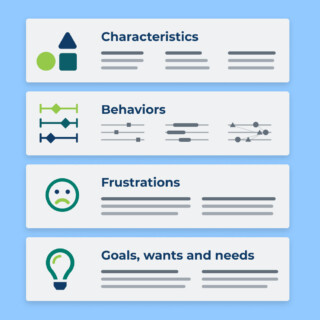
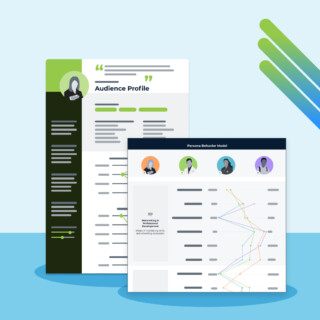
The value of informed decisions
Understanding these attributes (including characteristics and behaviors) equips organizations to make user data-driven decisions that enhance user experiences. For instance, if you know that a specific user segment prefers detailed guidance, you can tailor your user interface to offer more contextual help, ensuring a smoother and more satisfying experience.
When you truly understand your audience, you can align your user experience strategies to effectively meet both their needs and your business objectives.
Building a framework and sharing the information
Now, let’s address the question of what to do with the attributes and audience information you’ve gathered. To harness the potential of user segmentation, you’ll need a structured framework for capturing, organizing, and managing user information. While marketing tools like HubSpot can be helpful, consider tailoring a framework using tools like Airtable to suit your specific segmentation requirements.
This framework also encourages collaboration across your organization, allowing stakeholders to access, utilize, and even share user information, enabling user-driven decision-making that improves user experiences from end to end.
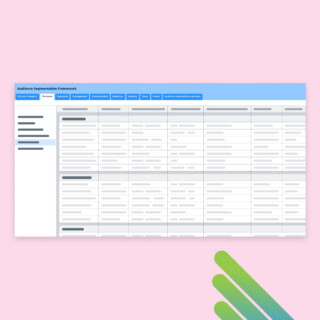
The next steps
Now that you have embarked on your journey towards advancing audience segmentation to improve user experience at your organization, you may be eager to explore this topic further.
Our free on-demand video, “Intro to Audience Segmentation,” takes a deeper dive into the subject and provides more detail on how you can use segmentation to transform your organization’s approach to user experience.
